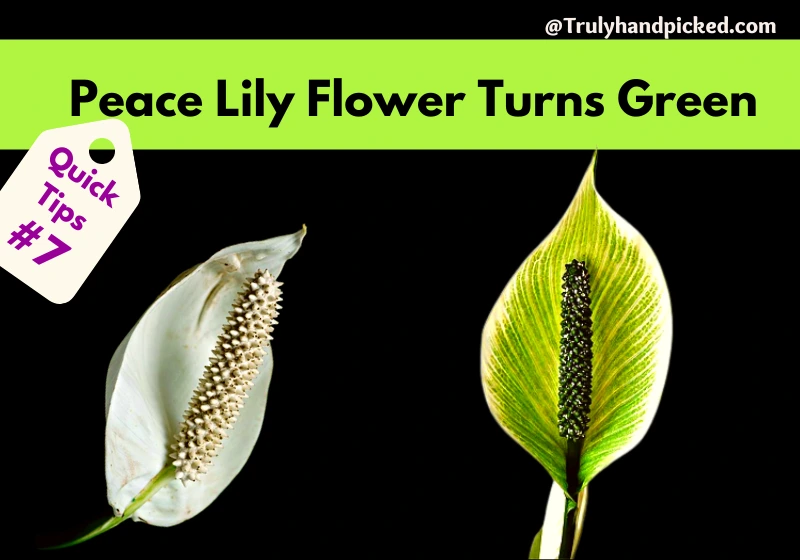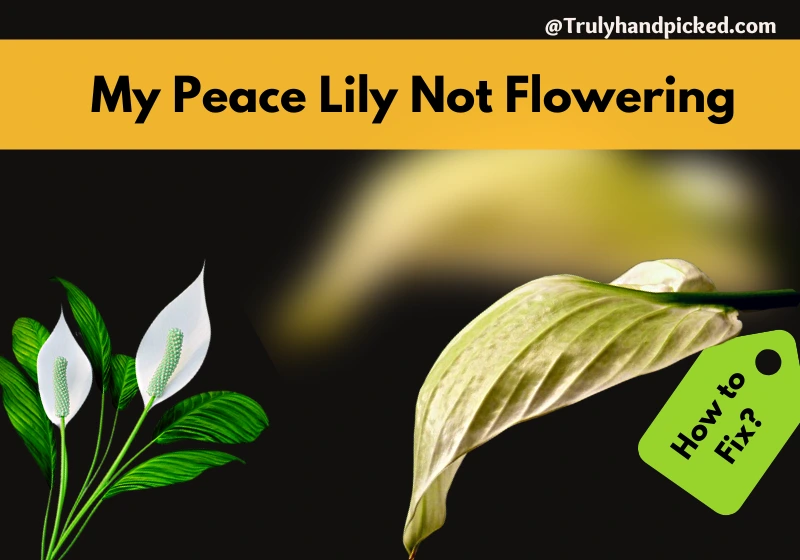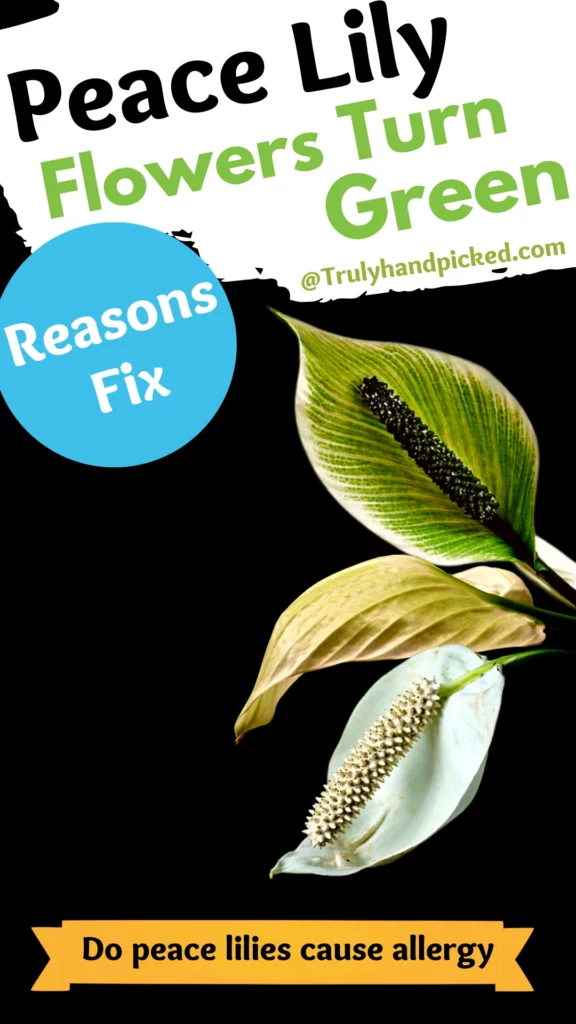Why is Peace Lily Flowers Green?
The flowers of a peace lily plant grow with a single white or cream-colored petal or spathe. This long and single spathe clusters around the stem consist of a spadix.
This part is botanically called inflorescence, which unfurls after reaching its fully mature form. Sometimes, this spathe turns green instead of its white or ivory shade.
Possible reasons for turning a peace lily plant green instead of white, which are as follows-
- The plant is getting more light than it needs, which in turn stimulates photosynthesis in spathes (flower-like structures)
- Either it is at the natural form of the blooming process
- Or your plant is getting improper watering and too much feeding
Once the blooming phrase of a growing peace lily plant ends, the creamy-white spathe starts turning green eventually.
Too much light for this shade-loving plant stimulates and shows green pigments (chlorophyll) due to the normal photosynthesis procedure of a plant. If your plant produces green flowers due to this process, it is normal and unharmful.
Quick Tip – window facing for peace lily: Choose north or east facing window for your peace lily plant, where it gets enough tender morning light.
Avoid places where it’s highly humid and has direct sunlight spots. Peace lily plants are gentle and love shades and indirect sunlight rather bright.
But, once you find that the flowers of a peace lily plant are turning green without its normal cause, be sure that it must suffer from nutrition problems. It is mostly happened due to over-fertilization.
We have mentioned several times that overfertilization is much more harmful than under-fertilization. So, try not to feed your plant too much or unnecessarily, when it is not looking for a nutritional boost. You should remember some facts in this regard that-
- You must stop fertilizing your plant immediately
- You cannot turn those green flowers again even after controlling fertilization
- However, you can get the next set of flowers with a proper white shade without any touch of green color
- Stop feeding your plant for a while consistently
Apart from this fertilization issue, some other improper growing climates also sometimes force a growing peace lily plant to produce green flowers instead of white ones. These are-
- Improper climate
- Low-light condition
- Unpruned plant
- Infrequent fertilization
- Extreme low or high temperature
- And inadequate humidity
So, if you don’t want to get green flowers from your indoor peace lily plant, you must look after these issues attentively and take precautions instantly.
Why My Peace Lily Not Flowering and Has Stunted Growth?
Stunt growth or not blooming is one of the commonest troubleshoots of a growing peace lily plant. The peace lily is one of the most popular houseplants you can grow effortlessly.
Its white spathe part is considered a blossom. These spathes resemble mesmerizing green foliage.
Gardeners mostly pick a peace lily plant to grow for this astonishing display and elegant flowers. however, they may face that their favorite houseplant may be not flowering without leaving any clue.
If you are suffering from this same issue, let’s learn some notable tips on this topic along with some possible solutions-
Causes of Not Blooming:
- Insufficient light, as in if you place your plant in a place where it can’t get proper sunlight or temperature
- Inadequate watering, when you keep your plant underwatering or in overwatering condition for long
- Lack of nutrition, when you don’t feed your plant properly and regularly
- Unhealthy roots, if you don’t let the root stay happy by keeping it congested or water-logged for long
- Inattentive caring methods, like if you do treat the troubleshoots in time or apply curing methods on pests as well as diseases
Among the possible causes, insufficient light is the most typical reason for stunt blooming. Try to keep your plant in a proper place where it can get adequate sunlight daily, especially during its initial growing session.
How to Deal with It:
- Try to sow the plant in a potting soil that drains well and riches with organic plant food
- Feed your plant after every 14-20 days with organic matter, during its primary growing days
- Try to fertilize your peace lily plant in liquid form by diluting it with water, as it will boost the blooming session optimally
- Keep your planter in a place where it can get bright but indirect sunlight consistently
- It is best to put in a south or west-facing window with partial shade
- Water your plant when the soil turns a bit dry using only distilled water
- Repot your plant, when the roots go out of its current planter
- Apply some natural pesticides like ACV or neem oil etc. once in a while
- And attend your plant frequently to stay updated about its growing improvements
Can Peace Lily Cause Allergies?
Houseplants can add a dash of beauty to your interior and revamp the whole look of your house naturally. But this natural interior design can turn into a nightmare when it produces some unpleasant experience unknowingly.
Providing some allergic reactions is a common issue in such cases. The peace lily is mildly an aromatic houseplant, and thus, sometimes, may provide respiratory allergies in some people.
However, according to some analysis reports, this species of lily is not that allergic. Peace lily initially never causes pollen allergic to a human ever.
On the other hand, it can purify the air and increase the oxygen level in the room it is placed.
Sometimes, a few highly allergic persons and your house pets may face a bit affected by the scent of a peace lily plant or its flowers.
Occasionally, some allergic molds grown inside the soil or insects present on your plant can provide some allergic reactions in sensitive people. So, the common causes of mere allergic reactions from peace lily plants, are-
- Sensitive qualities of pollen
- Mold buildups in soil
- The low humidity of the room
- And high aromatic essence of the plants
But you can easily avoid this allergic grasp with some smart tricks, such as-
- Wear gloves and eliminate pollen from peace lily flowers, when they are fully grown
- Keep the watering level on your plant perfect to avoid overwatering, as it causes mold build-up in the soil
- Keep the humidity level proper using a humidifier
- And do pebble mulching to boost the draining quality a bit more convincingly


